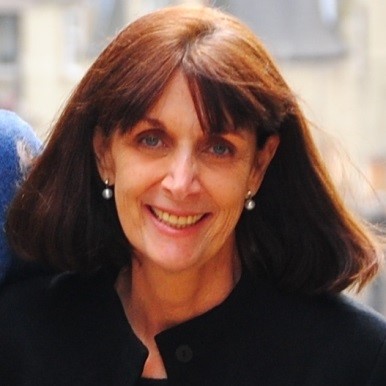By Lilian Nassi-Calò
 A recent study1 on the effect of article processing charge (APC) on open access (OA) analyzed in this blog2 assessed the financial burden of this investment by authors in India and its effect on dissemination of research results in publications from various countries. The research pointed out that, despite the availability of numerous APC free open access journals from India and other countries, Indian researchers invested about US$ 2.4 million per year between 2010 and 2014 in publication fees of higher impact journals aiming to increase the visibility and the chances of having their papers cited.
A recent study1 on the effect of article processing charge (APC) on open access (OA) analyzed in this blog2 assessed the financial burden of this investment by authors in India and its effect on dissemination of research results in publications from various countries. The research pointed out that, despite the availability of numerous APC free open access journals from India and other countries, Indian researchers invested about US$ 2.4 million per year between 2010 and 2014 in publication fees of higher impact journals aiming to increase the visibility and the chances of having their papers cited.
APC-funded open access publishing is the fastest growing form of scientific publishing in the world. It is estimated that the number of articles in this modality increases at a rate of 2% per year. However, for many researchers, fees can be a serious impediment to publication. Many funding agencies around the world include payment of publication fees in the research grants they provide; alternatively, research institutions can take responsibility for their payment. In the absence of these alternatives, the fees are personally funded by the authors.
An article by Ling Ling Wang and coworkers at Nanjing University, China3 assessed global funding sources of APC through research grants, institutions and the authors themselves. The study was conducted with articles on Health Science, Biology and Life Sciences indexed in the Web of Science between 2009 and 2013, in which the authors identified 255 OA journals which charge APC (APC OA) and 183 who do not charge fees (free OA). Hybrid journals have not been considered, however. The survey included 156,104 articles (only original articles and review articles were selected) from APC OA journals and 80,256 free OA articles. Moreover, the authors collected information on APC values charged by the journals (ranging from US$ 40 to US$ 5,000), and identified among the articles those funded by research grants and those without funding. Finally, they looked for a possible correlation between APC values and the journal Impact Factor (IF, Journal Citation Reports, 2012).
The study results showed that mean APC values increase with IF intervals, but with wide variation within each IF interval. For example, the IF range with the largest number of APC OA journals, between 1 and 2 and between 2 and 3 charge APC between US$ 105 and US$ 3,300 and between US$ 320 and US$ 3,975, respectively. The upper IF intervals as 7-8 and greater than 8, however, have minor variations, ranging from US$ 1,204 to US$ 3,900 and between US$ 2,250 and US$ 3,900, respectively. The authors draw attention to the fact that 80% of APC OA journals have IF equal to or less than 4, and that despite the tendency of higher IF observed in journals with higher APC, there are exceptions.
The authors found a correlation between APC and the percentage of articles funded by research grants. The higher the APC value, the greater the percentage of articles originated from grant financed research. In the APC range with the highest number of articles, between US$ 2,000 and US$ 2,500, the authors found 102 journals and 76,273 articles, of which 79.4% were derived from funded research projects. This percentage rises to 92.9% when the APC range considered is greater than or equal to US$ 2,500. For comparison, 80,256 articles were published in free OA journals, and only 31% of the studies were funded. Among the almost 3 million articles published in subscription journals, 57% resulted from funded research projects.
As for the country of publication, of the 255 APC OA journals, 164 (64%) are based in Europe, 76% of which in the United Kingdom. These journals charge the highest APC values worldwide (on average US$ 2,071), followed by 40 North American publications (average APC of US$ 2,000), nine from Oceania (average of US$ 1,589) and 10 journals from Latin America (on average US$ 838). Then are three journals from Africa (on average US$ 600) and 29 from Asia (on average US$ 545). The authors highlight the high percentage of free OA journals in Brazil, a vehicle used by most researchers in the country, even when they have research grants from funding agencies. We know that this fact is due to the predominance of OA among Brazilian quality journals that are published by SciELO.
Considering the ten countries with the largest number of OA articles, in general, the results of funded research are published more in APC OA journals than in free OA journals – with the exception of Brazil. A noteworthy fact is that in six countries in Europe and North America, the percentage of articles resulting from funded projects published in APC OA journals is higher than in subscription journals. The other four countries among the top 10 in OA are in Asia (China, Japan and South Korea) and in South America (Brazil), regions that stand out for the high number of free or low APC OA journals. In spite of this fact, however, in these countries, articles resulting from research projects are published more in subscription journals than in APC OA journals. The data also shows that Brazil publishes more articles in OA (APC and free) than United Kingdom, Germany, Canada, France or Italy, individually. This is largely due to the SciELO Program, which houses its open access journals “on a national platform reducing costs, increasing efficiency” and facilitating interoperability of metadata between repositories, as highlighted by the Indian authors in their article1.
The study concludes that non funded authors in Health science, Biology, and Life Sciences prefer to publish their results in subscription journals or OA journals, and that funded studies are more likely to be published in APC OA journals, even those whose rates are considerably high. It is worth remembering that a positive correlation was found between APC value and the journal IF. It is well known that the highest impact journals belong to commercial publishers and are not open access. It should also be taken into account, regarding the authors’ options, the open access mandates of funding agencies, institutions and governments around the world, which demand the results of publicly funded research be made available in OA, either through Gold OA journals or self-archiving in open access repositories, respecting the publishers’ embargo periods.
As pointed out in the study on the OA publication scenario in India1, the high APC figures charged mainly by European and North American journals pose a risk to the sustainability of this business model, even if they are paid for by research grants or the authors’ affiliation institutions. It is necessary to choose innovative and collective solutions, such as the SciELO Program, or alternatives such as those discussed in the recent AlterOA workshop, to reduce costs and increase the efficiency of the editorial process.
Notes
1 MADHAN, M., et al. Should Indian researchers pay to get their work published?. ePrints@IISc [online]. 2016. No prelo. Available from: http://eprints.iisc.ernet.in/54926/1/Post-print_APC_paper.pdf
2 NASSI-CALÒ, L. Taxas de publicação em Acesso Aberto: nova crise das publicações seriadas? [online]. SciELO em Perspectiva [viewed 12 January 2017]. Available from: http://blog.scielo.org/blog/2016/11/29/taxas-de-publicacao-em-acesso-aberto-nova-crise-das-publicacoes-seriadas/
3 WANG, L.L., LIU, X.Z. and FANG, H. Investigation of the degree to which articles supported by research grants are published in open access health and life sciences journals. Scientometrics [online]. 2015, vol. 104, no. 2, pp 511-528. DOI: 10.1007/s11192-015-1624-4
References
EUROPEAN COMMISSION. Report of the Workshop on Alternative Open Access Publishing Models [online]. 2015 [viewed 12 January 2017]. Available from: http://ec.europa.eu/digital-agenda/en/news/report-workshop-alternative-open-access-publishing-models
MADHAN, M., et al. Should Indian researchers pay to get their work published?. ePrints@IISc [online]. 2016. Preprint. Available from: http://eprints.iisc.ernet.in/54926/1/Post-print_APC_paper.pdf
NASSI-CALÒ, L. Taxas de publicação em Acesso Aberto: nova crise das publicações seriadas? [online]. SciELO em Perspectiva [viewed 12 January 2017]. Available from: http://blog.scielo.org/blog/2016/11/29/taxas-de-publicacao-em-acesso-aberto-nova-crise-das-publicacoes-seriadas/
WANG, L. L., LIU, X. Z. and FANG, H., Investigation of the degree to which papers supported by research grants are published in open access health and life sciences journals. Scientometrics [online]. 2015, vol. 104 no.2, pp. 511-528 [viewed 24 January 2017]. DOI:10.1007/s11192-015-1624-4
 About Lilian Nassi-Calò
About Lilian Nassi-Calò
Lilian Nassi-Calò studied chemistry at Instituto de Química – USP, holds a doctorate in Biochemistry by the same institution and a post-doctorate as an Alexander von Humboldt fellow in Wuerzburg, Germany. After her studies, she was a professor and researcher at IQ-USP. She also worked as an industrial chemist and presently she is Coordinator of Scientific Communication at BIREME/PAHO/WHO and a collaborator of SciELO.
Translated from the original in Portuguese by Lilian Nassi-Calò.
Como citar este post [ISO 690/2010]:















Read the comment in Spanish, by Javier Santovenia Diaz:
http://blog.scielo.org/es/2017/01/24/estudio-evalua-fuentes-de-financiamiento-para-el-pago-de-tasas-de-procesamiento-de-articulos-en-acceso-abierto/#comment-40756